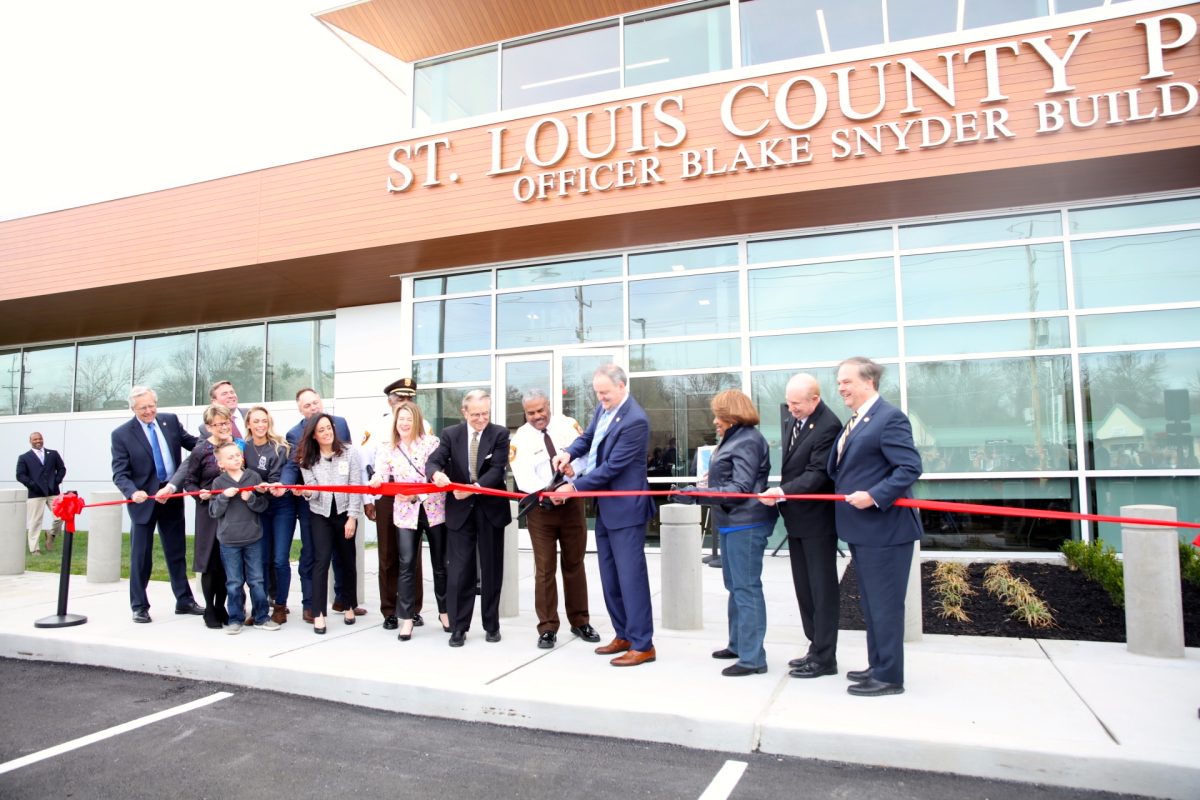By Gloria Lloyd
News Editor
glorialloyd@callnewspapers.com
In the wake of increased attention on potential efforts to combine St. Louis County and St. Louis city into one through a city-county merger, a report from the county police chief surfaced that offers an alternate look at how police departments would be combined if the city re-entered the county.
The self-described “concept paper” from police Chief Jon Belmar, titled “Law Enforcement: A Regional Approach,” cites three reasons for combining the St. Louis County Police Department and the St. Louis Metropolitan Police Department: Increase the effectiveness of police services across the region; Increase the equity of police services across the region; and recalibrate the public safety image of St. Louis.
“The focus of the police resources must be to secure the downtown and central corridor,” according to the report. “Safety is critical to the corporate and tourist center… Visitors to the city must feel safe to spend their money in these areas. If these areas are no longer viable, how can the city survive?”
The report offers a different way forward than the leaked plan from nonprofit organization Better Together that would merge the county and city into one mega-city overriding most of the powers of existing municipalities and disbanding municipal police departments in the county.
When the report came out earlier this month, Belmar initially told reporters that he commissioned his criminal division to come up with the plan late last year as an alternative to disbanding municipal police departments, which he didn’t view as a good solution.
“Chief does not want to make any further comments on the City/County merger,” police spokesman Sgt. Shawn McGuire told the Call. “We are all waiting to see what Better Together releases as their plan.”
The county currently has eight police precincts, with two in south county. Those would stay in name, but would get new boundaries as the Affton Precinct would include part of south city, and the North County Precinct would be split up into multiple jurisdictions including Airport, Jennings, Spanish Lake and Jamestown/Black Jack. The city would be split into Downtown, Dogtown, Soulard, Dutchtown, CWE, Riverfront, Baden and Northwest City.
Other areas of the document refer to an “Affton/Lemay Precinct” and a “South County/Oakville Precinct.” According to an organizational chart, the two south county-centered precincts would be under a South Area Patrol Command with the Dutchtown Precinct.
Interestingly, although the report emphasized that downtown had to be the focus, by the report’s count, the new city/county Affton Precinct would have the most total crimes of any precinct other than Soulard. The report doesn’t separate those crimes into violent, nonviolent or serious crimes.
Affton would get 131 officers, more than the 121 recommended for downtown and the 84 recommended for Riverfront. South County would get 52 officers.
The report states that officials came up with the precinct division to ensure that there would be an even distribution of workload and 40-percent downtime for officers. It says that large precincts with low crime, like Wildwood, would still have excellent response times. Wildwood would have six officers.
The major change to how policing works in the region would have to be done through either a ballot initiative or contracting, but the report says that contracting probably wouldn’t work long term. Instead, a ballot initiative would have to bring St. Louis city into the county first and also freeze municipal boundaries inside the county, along with abolishing the city earnings tax and bringing the city into the county sales-tax pool.
The plan offers a phased approach to consolidation over five years that could happen in many ways, but the report outlines two possibilities. The first option would be for a yearlong transition team of both city and county officials to develop the plan for consolidation, headed by a “former local government official with the interest of the region in mind.” This group would choose the new chief of the consolidated departments.
Once the chief was in place, the pay scales would be implemented and policies of the two departments would have to be consolidated.
At the time the report was written, the SLMPD had 1,328 commissioned officers and 465 professional staff,
compared to the county’s 1,006 officers and 329 staffers, for a total of 1,793 employees to 1,335. The combined departments would have 320 more officers and 27 fewer staffers, according to the proposal.
It would be funded by a combined budget of $354 million, with 92 percent of that going to personnel costs of $271.5 million for officer salaries and $54 million for staffer salaries.
The plan also notes some hiccups: The city would lose nearly 30 percent of its revenue if it ended the earnings tax. It wouldn’t make that up through the county pool tax, and it wouldn’t put in enough to the pool tax to equal what it takes out.
“This is likely not acceptable to municipalities,” the report states.
The report ends by saying that “many issues” would have to be resolved, including courts, municipal courts, jails, communications and pensions.































